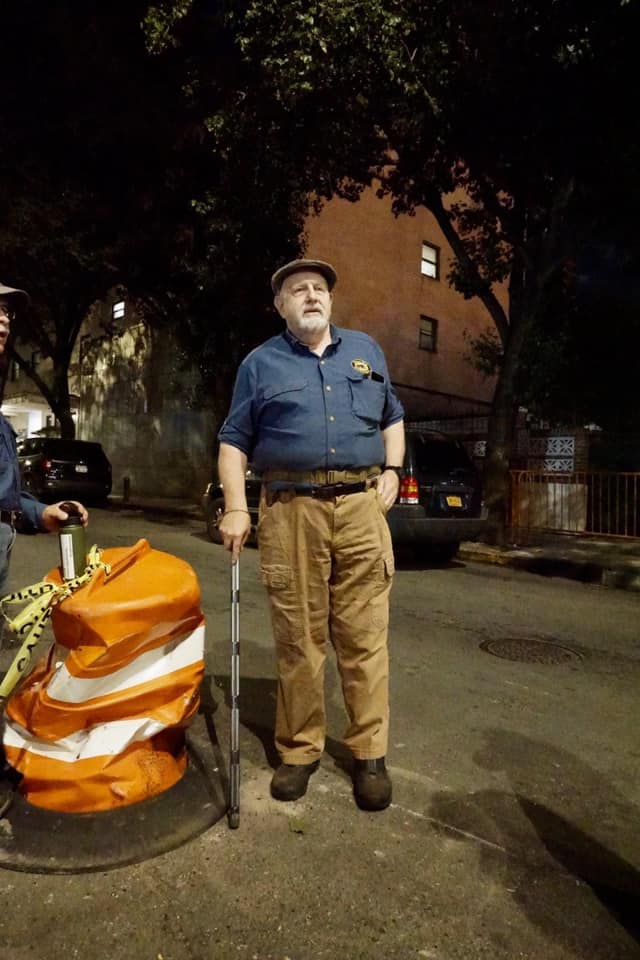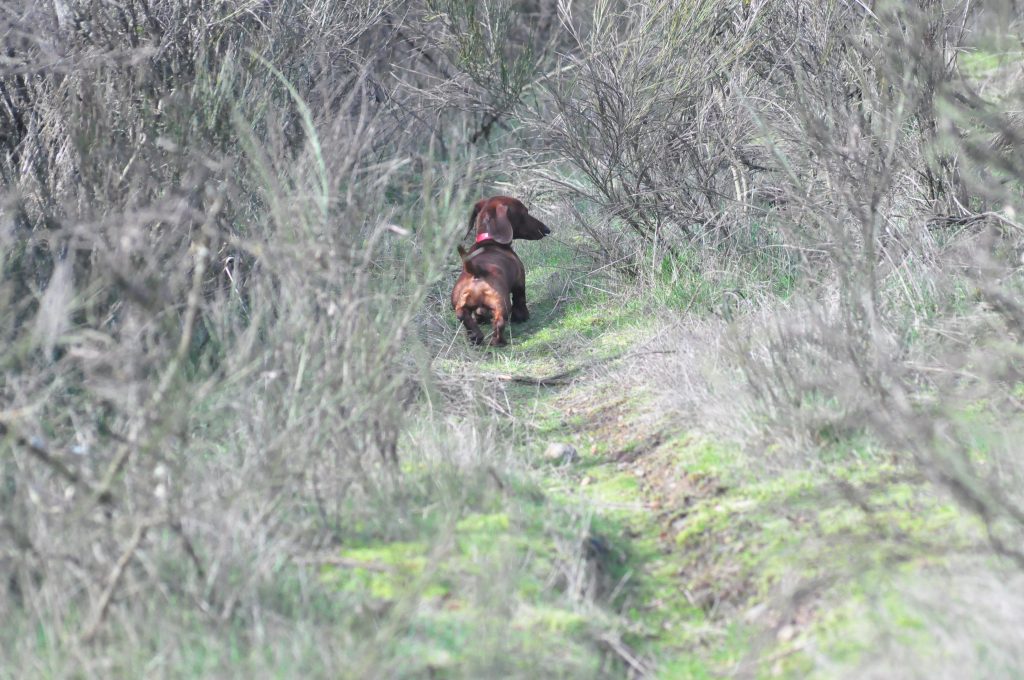438 – Richard Reynolds – Rat Hunter of Manhattan
Richard Reynolds – Rat Hunter of Manhattan
Richard Reynolds joins me for part two of our conversation. This time we’re talking rat hunting with Terriers in New York City.
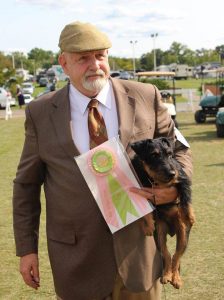
Richard Reynolds with a Jagd Terrier, shown in FSS at Open Shows.
“Quite fairly there was never a transition (from hounds to terriers),” Reynolds said. “I was always interested in hunting the terriers. We don’t have as many Fox in the United States as they do in England … and you had to work a little harder. Bringing up the terriers and putting the terriers to ground was always a part of our Fox hunt.
“When I left the pack, I wanted a purebred terrier that I could show. Somebody slipped me into a low mileage used Norfolk terrier and that suited me pretty good. But I didn’t know whether it could hunt or not. A few years later and a little experience and a few Norfolks later, we proved they were damn good hunters. In fact, the best terrier that I’ve ever had to this day remains one particular Norfolk.”
Reynolds’ rise to fame as the Rat Hunter of Manhattan started at a dog show in Liberty Park at the base of the Statue of Liberty. Rats had overrun one of the handlers’ setups and he turned his Norfolk loose to do its job. The park superintendent happened to see this feat. The rest, as they say, is history.
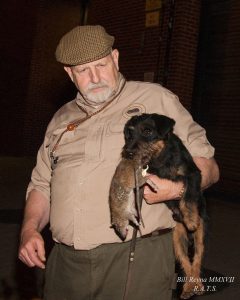
Jagd Terrier with Reynolds and one less rat on the streets of Manhattan.
“If I tell you that my dog is a good rat catcher, you won’t care,” Reynolds opined. “If a rat is headed to run up your pant leg and my dog stops it, you’ll have a lot of respect for that fuzzy little critter down there. So that’s exactly the way we’re trying to make our point.
“We’re all about an idea. That idea is preserving breed type through maintaining the actual function of the dog. You can simulate all these things but you can’t replicate the actual deed of hunting or ratting or whatever. It’s different. It’s about the dogs but don’t tell anybody because we get an awful lot of good press on the fact that we’re killing rats.
“We can’t show purebred dogs to the media. They don’t care. Dead rats are a big seller. We have media with us (nearly) every night that we go out. We’ve had a lot of media. But that’s our little way of selling purebred dogs to the public.
“We’re doing it for the sake of the dogs. There’s no money here. All sport is ruined as soon as you monetize it. So we don’t charge to hunt. Our members occasionally cough up $5 each time they hunt, but more often than not they forget to pay it and we forget to collect it. So it’s kind of a thing for the dogs, by the dogs and of the dogs. A good night is when the dogs work well together. A bad night is when we don’t get anything.”
Reynolds has been instrumental in setting up a training ground in southern New Jersey. The primary purpose of which is running AKC earthdog tests.
“We use it as a basic training ground for terriers and dachshunds,” Reynolds noted. “It’s not the same thing (as street hunting). Once they get through the earth dog program there’s a lot of on the job training but it’s a starting point. The sport of AKC earthdog or den trials or Jack Russell terrier Association go to ground is kind of diminished in recent years. We use it for training Street dogs but really what we’re trying to do is rejuvenate this sport in and of itself of earth dogs and den trials.”
283 – Dachshund Field Trials and Earthdog Tests Preserve Instinct
Dachshund Field Trials and Earthdog Tests Preserve Instinct
Dachshund breeder and field judge Jennifer Milosavljevic shares the excitement of Dachshund field trials and Earthdog tests.
The Dachshund is first and foremost a hunting breed. Hunters created the breed and by competing in Dachshund field trials, breeders and owners work to preserve the breed.
Dachshund field trials have the objective to “track the game,” meaning to follow a scent trail that a rabbit or hare has left behind. The goal is not to actually catch any prey and no animals are harmed in field trials.
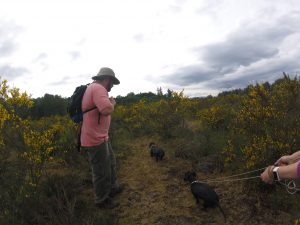
Dachshunds being released in a brace at a field trial.
“The gallery lines up and in a line walks forward beating the brush,” Milosavljevic said. “Once a hare is spotted you yell “Tally Ho.””
Dogs run in packs of two (called a “brace”) and are judged on their ability to search and explore; to pursue and keep control of a trail; the accuracy in trailing; obedience to commands; their “willingness to go to earth” (into a tunnel or underground); courage; and more.
“… aggression was utilized back in the day when the Dachshund was created to fight the badger and any other critters that burrowed underground in the farmers’ fields,” Milosavljevic said. “When you think about it, it takes a lot of courage to go down a tunnel or flush out game that may be larger than you. That type of aggression is no longer desired or needed in any ethical breeding program. However, the ability to hunt or find game is a sought-after trait in many breeding programs.”
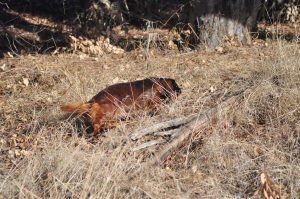
Working a scent line at a dachshund field trial.
“I have learned to identify early the dogs that I want in my breeding program,” Milosavljevic said. “Those that have the natural hunting ability. As a breeder and an exhibitor, I have found that keeping the form and function of the dog along with conformation is where I want to be. Conformationally, sound dogs are the building blocks of a breeding program, however, failing to breed in or keep natural instincts may be a disservice to the breed, no matter what breed.”
Jennifer Milosavljevic is an AKC Field Trial and Earthdog judge. She resides in Kalama, WA. She owned her first Dachshund at 11 years old. She breeds, owns and shows miniature smooth Dachshund and occasionally a standard or miniature longhair. She is a member of the Dachshund Club of America, the Cascade Dachshund club and the Dachshund Fanciers of Southwestern Washington.
https://www.akc.org/sports/field-events-hounds/dachshund-field-trials/

